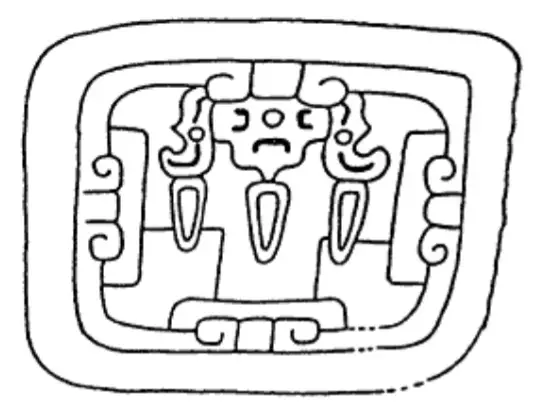 When most people think of the term “Cosmic Portal,” they think of the 1994 movie starring Kurt Russell called “Stargate” and the many spin-offs and add-ons of that franchise. In the film, archaeologists discover an ancient ring-shaped device that creates a portal and a subsequent wormhole through which people can travel to a different place somewhere else in the universe. The huge stone Stargate ring is coopted by the US Air Force and becomes part of a classified project. In the movie, the US military sends people through the portal, and they end up on the desert planet Abydos which is very reminiscent of ancient Egypt. The 1994 “Stargate” movie spawned two other films, 3 television series, one web series, an animated series and several video games. It turns out that the concept of a “stargate” from the film was nothing new to the people of ancient Mexico. In fact, several major civilizations believed that they could access and go through what is termed by archaeologists, “cosmic portals.” So, instead of meeting the ancient Egyptian god Ra like the Kurt Russel character did in the “Stargate” movie, the ancient Mexicans “crossed over” and met with Quetzalcoatl, Ix Chel, Huitzilopochtli, Yum Kaax, and a whole host of other deities, spirits and supernatural essences. In Mexico the “cosmic portal” is not entirely a thing of the past. There are even some members of indigenous Mexican cultures living into the 21st Century who believe they can access these mysterious doorways to other worlds, other dimensions and other consciousnesses.
When most people think of the term “Cosmic Portal,” they think of the 1994 movie starring Kurt Russell called “Stargate” and the many spin-offs and add-ons of that franchise. In the film, archaeologists discover an ancient ring-shaped device that creates a portal and a subsequent wormhole through which people can travel to a different place somewhere else in the universe. The huge stone Stargate ring is coopted by the US Air Force and becomes part of a classified project. In the movie, the US military sends people through the portal, and they end up on the desert planet Abydos which is very reminiscent of ancient Egypt. The 1994 “Stargate” movie spawned two other films, 3 television series, one web series, an animated series and several video games. It turns out that the concept of a “stargate” from the film was nothing new to the people of ancient Mexico. In fact, several major civilizations believed that they could access and go through what is termed by archaeologists, “cosmic portals.” So, instead of meeting the ancient Egyptian god Ra like the Kurt Russel character did in the “Stargate” movie, the ancient Mexicans “crossed over” and met with Quetzalcoatl, Ix Chel, Huitzilopochtli, Yum Kaax, and a whole host of other deities, spirits and supernatural essences. In Mexico the “cosmic portal” is not entirely a thing of the past. There are even some members of indigenous Mexican cultures living into the 21st Century who believe they can access these mysterious doorways to other worlds, other dimensions and other consciousnesses.
Did the ancient Mexicans believe that people could travel physically through these portals, like Kurt Russel and his crew? Probably not, but we can’t be so quick to assume the beliefs of people living 2,000 years ago. From what researchers know of the living cultures encountered when the Europeans first arrived, and from looking at the archaeological record, as well as examining some of the beliefs of certain modern indigenous cultures in Mexico, they most likely believed that spirits or consciousnesses traveled through these portals. These special gateways opened up at points 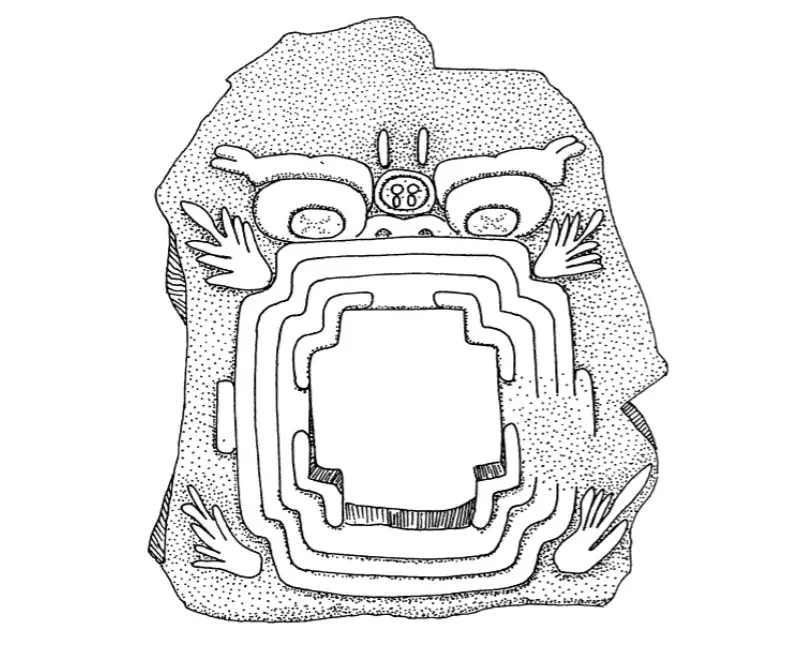 where the “veil was thin” between the physical world on earth’s surface and whatever dimension, “otherworld” or grander consciousness exist beyond our physical reality. From what archaeologists understand now, cosmic portals may have been opened up deliberately by special people with sacred know-how or may have occurred spontaneously or accidentally depending on place and time. In his scholarly article on sacred portals in Mexico, author Brian Stross has this to say:
where the “veil was thin” between the physical world on earth’s surface and whatever dimension, “otherworld” or grander consciousness exist beyond our physical reality. From what archaeologists understand now, cosmic portals may have been opened up deliberately by special people with sacred know-how or may have occurred spontaneously or accidentally depending on place and time. In his scholarly article on sacred portals in Mexico, author Brian Stross has this to say:
“According to numerous Mesoamerican traditions, the cosmic portal will, on occasion, open of its own accord at specific times and places. The places are usually where power is concentrated, such as caves, springs, holes in the ground, tops of mountains, and so on. Midnight and midday are the times most frequently cited by native consultants. At these times, when the doorway is open, shamans and deities can pass through, and also one can look through the open portal oneself and see what is on the other side.”
As the author stated, cosmic portals most likely were two-way bridges between the earthly realm and whatever they were connecting to. The person opening up the portal may have had the opportunity to pass through the portal himself or may have opened up the portal to receive something from “the other side.” There is much evidence across many cultures of ancient Mexico that people believed that spirits, deities, consciousnesses and other supernatural essences passed through the cosmic portals to our world to assist and teach earth dwellers.
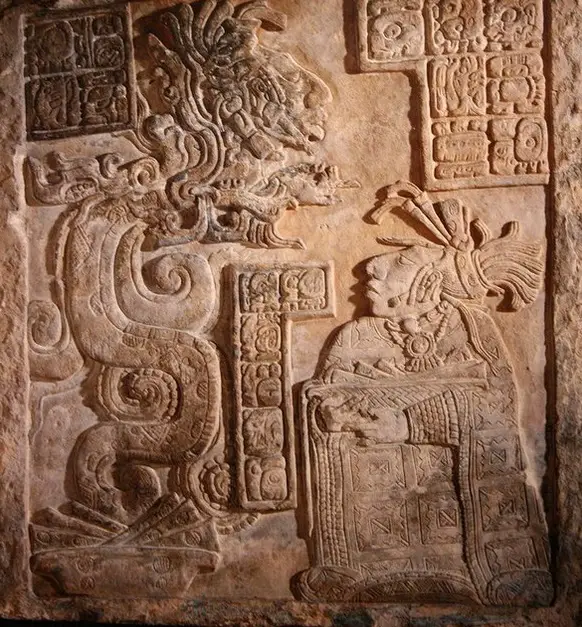 The archaeological record has many illustrative examples of cosmic portals as found in murals, decorated pottery and stone carvings. The Maya and Zapotec civilizations have many examples in their art and architecture that have been studied by archaeologists. The ancient Mexicans never depicted the portals as swirling vortexes looking like black holes or satellite images of hurricanes. They were usually represented by the mouth of a serpent or more stylistically as a rectangle with what appears to be teeth around it. The cosmic portal was an extension of the “jaws of the sky” or “vision serpent” imagery found in many pre-Conquest civilizations in Mexico. A gaping mouth is symbolically “eating” the person opening the portal and the experiencer travels through what amounts to a tunnel reminiscent of a body of a snake. The idea of a vision serpent is the topic of another show, but the cosmic portals contain similar imagery in the archaeological record.
The archaeological record has many illustrative examples of cosmic portals as found in murals, decorated pottery and stone carvings. The Maya and Zapotec civilizations have many examples in their art and architecture that have been studied by archaeologists. The ancient Mexicans never depicted the portals as swirling vortexes looking like black holes or satellite images of hurricanes. They were usually represented by the mouth of a serpent or more stylistically as a rectangle with what appears to be teeth around it. The cosmic portal was an extension of the “jaws of the sky” or “vision serpent” imagery found in many pre-Conquest civilizations in Mexico. A gaping mouth is symbolically “eating” the person opening the portal and the experiencer travels through what amounts to a tunnel reminiscent of a body of a snake. The idea of a vision serpent is the topic of another show, but the cosmic portals contain similar imagery in the archaeological record.
One of the most studied images of a cosmic portal is found in stone, at the Zapotec site of Monte Albán, dating to about 150 to 200 AD. On the South Platform of the ancient city on a wall of what archaeologists call Mound III, a curious scene plays out. In the left of the image, we see a seated man dressed in a cloak and wearing an elaborate headdress. He is holding in his hand a bundle of leaves. To the right is a rounded rectangle shape that looks like a screen from an old analog TV set. There are two frames within this rectangle shape and the inner frame has around it what looks like teeth or fangs. In the center of this rounded rectangle is the depiction of a human head with three teardrop shapes hanging from it. What have researchers interpreted this scene to be? The seated figure is a ruler or a shaman or a combination of the two. He is dressed in finery, and some disagree as to what that means exactly. Some researchers think that the man’s garments indicate rank, to make it clear to the viewer that the person opening the portal is a man of importance. Some other scholars think that these were the appropriate clothes to use as part of the portal-opening ritual and had nothing to do with rank or profession. The man is holding a bundle with a large leaf coming out of it. The leaf has been identified as that of the datura plant. Called jimson weed, the devil’s trumpet and a few other names in the United States, the datura plant was used by many cultures in ancient Mexico for its hallucinogenic and curative properties. The plant was actively in use when the Spanish arrived and was called nanctzi, by Nahua speaking peoples, which means “the mother plant.” Spanish chroniclers in the first years after the Conquest report the plant was being called taag’amiah by Mixe speakers in what is now the Mexican states of Veracruz and Oaxaca. This word translates to “grandmother” in English. The leaves of the plant were ground up and blended with tobacco to make a mix called suchietl which when smoked was used to create a mild sense of 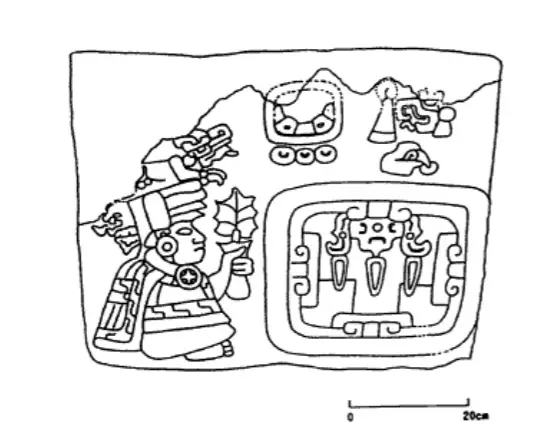 euphoria and a heightened sense of awareness. The leaves burned by themselves were supposedly a cure for asthma. In the case of opening portals, the leaves were probably smoked or ingested, and perhaps the ground up seeds of the jimson weed were used in some sort of trip-inducing mixture. As an aside, it’s important to note that the use of datura in these ceremonies was supervised by people who knew what they were doing to get the desired effects, so please don’t try this at home. Back to the image on the stone carving at Monte Albán, the rounded rectangle in the shape of an old TV set that the man is sitting in front of is the portal. Archaeologists cannot agree on what the image inside the portal represents. Early researchers thought it was a name glyph of a certain place. Since the rounded rectangle has been identified as a cosmic portal, archaeologists now think the human-looking form inside the box could represent the sacrum, a shield-shaped bony structure attached to the lower spine and the pelvis. The sacrum theory comes from the idea that the person opening the portal can see past the jaws, into the mouth and all the way into the insides of this symbolic snake. Other researchers believe that the inside illustration could be a specific spirit or god known to the people who occupied Monte Albán in 200 AD. The creation of this stone carving is too far back in time for modern researchers to know for sure what it means.
euphoria and a heightened sense of awareness. The leaves burned by themselves were supposedly a cure for asthma. In the case of opening portals, the leaves were probably smoked or ingested, and perhaps the ground up seeds of the jimson weed were used in some sort of trip-inducing mixture. As an aside, it’s important to note that the use of datura in these ceremonies was supervised by people who knew what they were doing to get the desired effects, so please don’t try this at home. Back to the image on the stone carving at Monte Albán, the rounded rectangle in the shape of an old TV set that the man is sitting in front of is the portal. Archaeologists cannot agree on what the image inside the portal represents. Early researchers thought it was a name glyph of a certain place. Since the rounded rectangle has been identified as a cosmic portal, archaeologists now think the human-looking form inside the box could represent the sacrum, a shield-shaped bony structure attached to the lower spine and the pelvis. The sacrum theory comes from the idea that the person opening the portal can see past the jaws, into the mouth and all the way into the insides of this symbolic snake. Other researchers believe that the inside illustration could be a specific spirit or god known to the people who occupied Monte Albán in 200 AD. The creation of this stone carving is too far back in time for modern researchers to know for sure what it means.
Since this Monte Albán illustration has been examined and explained, other illustrations of cosmic portals in ancient Mexico have come to light. Another famous scene appears on Lintel 15 from the ruined Maya city of Yaxchilán in the modern Mexican state of Chiapas across the Usumacinta River from Guatemala. This beautiful work of art dates to about 760 AD, hundreds of years after the carving at Monte Albán. Now in the British Museum in London, Lintel 15 features one of the wives of Yaxchilán ruler Bird Jaguar IV, a woman named Lady Wak Tuun, opening up a cosmic portal with the full vision serpent appearing. Lady Wak Tuun has been identified with certainty, so we know that at least in the Maya world, women could partake in the opening of cosmic portals provided they had elite status. There are many ritualistic elements in the scene on this stone carving, including a bowl with papers used in the bloodletting ceremony, and stingray spines used for auto-sacrifice. There are a few dozen Maya hieroglyphs surrounding the images of Lady Wak Tuun and her vision that have not yet been translated that may offer some new insight into the whole process of lifting the veils between worlds and consciousnesses and creating cosmic portals.
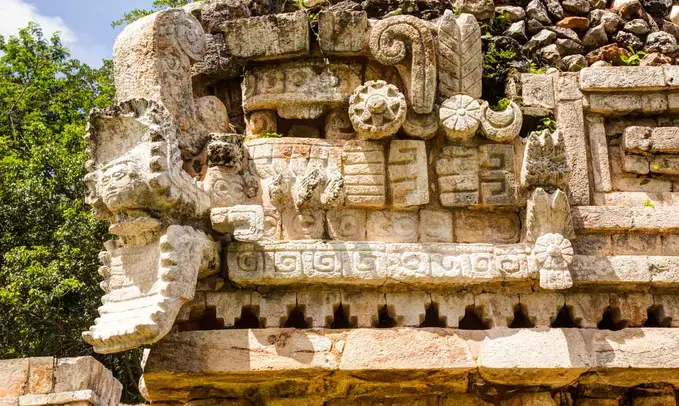 Curiously, there is at least one indigenous group in modern Mexico that still practices the ritual of opening cosmic portals, the Seri of the northern coastal deserts in the modern Mexican state of Sonora. For a general overview of the Seri, please see Mexico Unexplained episode number 209: https://mexicounexplained.com/seri-people-the-last-to-assimilate/ A Seri shaman-in-training undergoing his initiation will go on a spirit quest in the desert alone. As part of this experience, he must go into the mountains and find a large, solid rock with a flat surface that will serve as his personal “cave.” The young novice will draw a picture of a rounded rectangle on the rock to represent a cave entrance. He will sit in front of it, staring at it and if the spirits on the other side of the veil are willing, his consciousness will be transported to another world through that mock cave entrance. Essentially, the young Seri shaman-to-be is performing a ritual like what we see in the archaeological record 2,000 miles away and many centuries ago. Perhaps the practice of opening cosmic portals is more widespread and accepted than anthropologists and archaeologists realize. Is that because it works?
Curiously, there is at least one indigenous group in modern Mexico that still practices the ritual of opening cosmic portals, the Seri of the northern coastal deserts in the modern Mexican state of Sonora. For a general overview of the Seri, please see Mexico Unexplained episode number 209: https://mexicounexplained.com/seri-people-the-last-to-assimilate/ A Seri shaman-in-training undergoing his initiation will go on a spirit quest in the desert alone. As part of this experience, he must go into the mountains and find a large, solid rock with a flat surface that will serve as his personal “cave.” The young novice will draw a picture of a rounded rectangle on the rock to represent a cave entrance. He will sit in front of it, staring at it and if the spirits on the other side of the veil are willing, his consciousness will be transported to another world through that mock cave entrance. Essentially, the young Seri shaman-to-be is performing a ritual like what we see in the archaeological record 2,000 miles away and many centuries ago. Perhaps the practice of opening cosmic portals is more widespread and accepted than anthropologists and archaeologists realize. Is that because it works?
REFERENCES
Schele, Linda and David Freidel. A Forest of Kings. New York: Morrow and Company, 1990. We are Amazon affiliates. Buy the book on Amazon here: https://amzn.to/3TnjGhe
Stross, Brian. “The Mesoamerican Cosmic Portal: An Early Zapotec Example.” RES: Anthropology and Aesthetics, no. 29/30, 1996, pp. 82–101.

2 thoughts on “Cosmic Portals in Ancient Mexico”
Hi! I want to enjoy your podcast since I am so interested but I don’t know if you’ve heard your podcasts replayed but all rewind and start again. I ended up going to another podcast thinking something was wrong with maybe the server or wherever your audio files live, but after checking your site, it seems like it’s an error with the recording. This issue is happening on most, if not all of your audio. Just thought you should know since I think it could affect the success of your podcast and the amount of listeners you receive. Otherwise, I love it… I just wish I could listen to it without the podcast constantly repeating itself. Thank you!!!
Hi Alejandra and thanks for commenting. I have been hearing this for years and years from people. Some people have this problem and others don’t. I have tried testing this out myself and I never have the problem. I wish I could know what is going on and fix it, if I could. I really don’t know what to do. I know that no one has brought this up with YouTube, so I suggest you go there instead of trying to listen to it in the podcast format. Again, thanks for reaching out and thank you doubly for liking my work. Take care. —Robert